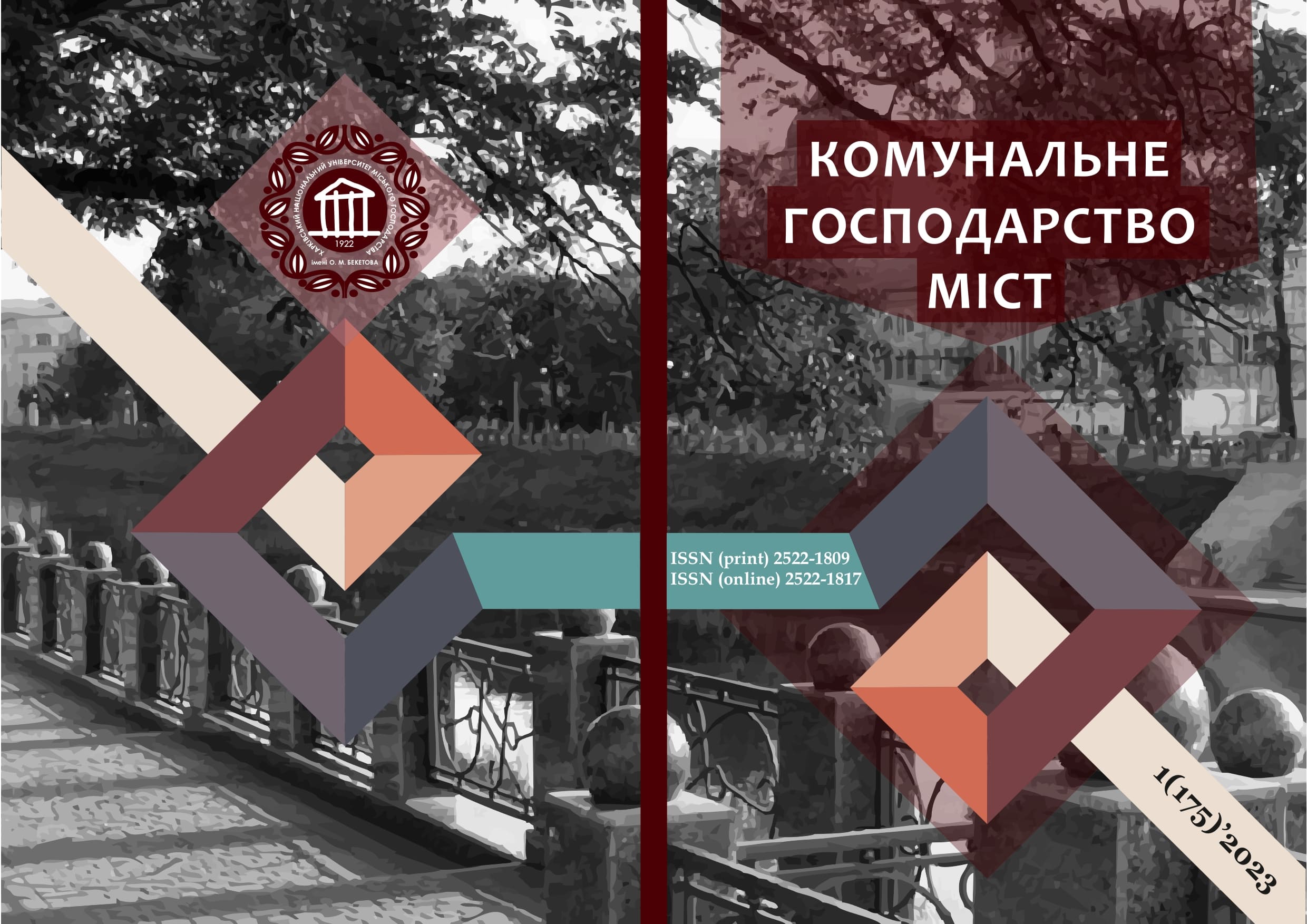INCREASING OF THE CORROSION RESISTANCE OF FIBERGLASS PLASTIC REINFORCEMENT THROUGH MODIFICATION OF THE POLYMER BINDER
DOI:
https://doi.org/10.33042/2522-1809-2023-1-175-47-51Keywords:
composite polymer reinforcement, fiberglass, alkaline environment, phenolic modifierAbstract
The issue of increasing the corrosion resistance of composite reinforcement, based on glass fiber and epoxy anhydride binder, is considered. The proposed samples of composite reinforcement were manufactured by needle extrusion technology. Glass fibers were evenly distributed in the channels and impregnated with a polymer binder based on epoxy resin. The amount of phenolic modifier in the polymer binder, according to the technological mode of obtaining composite reinforcement, was brought up to 5%. With a further increase in the content of the modifier, the degree of conversion of epoxy groups was no more than 70%, which sharply reduced the operational characteristics of the material. The overall ratio of polymer binder and glass reinforcement in the composite was ~ 60÷40. It was established that at low concentrations of the polymer modifier (up to 5 wt. parts), the processes of ordering and chemical grafting lead to compaction of the molecular grouping in the system, which in our case is characteristic of phenolic resins of the novolach and resol types. At the same time, under the conditions of the production technology, internal stresses in materials of this type increase sharply, which leads to the formation of surface defects (microcracks). At the tip of a crack or defect, sodium ions or other cations under the action of water undergo hydrolysis to form metal hydroxide, which, in turn, causes hydrolysis of siloxane bonds, thus weakening the mesh structure of silicon dioxide. The experimental activation energy was identified with the activation energy of sodium ion diffusion in the glass mass. But the plastic deformation of the glass in the region before the crack is very small, and instead of a uniform distribution of stress, the material cracks along the weakened centers The obtained data indicate that the action of the alkaline environment causes an increased loss of mass of the composite, both for the unmodified and for those modified with traditional phenolic resins. In turn, this ensures a high degree of penetration of alkalis into the volume of the material, access to reinforced fibers with their subsequent damage. To increase the corrosion resistance of composite reinforcement based on an epoxy anhydride binder, it is advisable to use a reactive sulfur-containing phenolic modifier. Its action is based on the ability to maintain the permissible monolithicity of fiberglass in the alkaline environment of concrete, the modulus of elasticity and necessary strength.
References
Kumarasamy S., Mazlan N., Abidin M., Anjang A. (2020) Influence of Fuel Absorption on the mechanical properties of glass-fiber-reinforced epoxy laminates. Journal of King Saud University: Engineering Sciences. Vol. 32(8). P. 548-554.
Kornilovych B.Yu., Andriievska O.R., Plemiannikov M.M., Spasyonova L.M. (2013) Fizychna khimiia kremnezemu i nanodyspersnykh sylikativ: navchalnyi posibnyk. Kyiv: «Osvita Ukrainy», 178 s.
Amaro A., Reis P., Neto M., Louro C. (2013) Effects of alkaline and acid solutions on glass/epoxy composites. Polymer Degradation and Stability. Vol. 98(4). P. 853-862.
Cabral-Fonseca S., Nunes J., Rodrigues M., Eusébio M. (2011) Durability of carbon fibre reinforced polymer laminates used to reinforced concrete structures. Science and Engineering of Composite Materials. Vol. 18(4). P. 201-207.
Amaro A. , Reis P., Neto M., Louro C. (2013) Effect of different acid solutions on glass/epoxy composites. Journal of Reinforced Plastics and Composites. Vol. 32(14). P. 1018-1029.
Kattaguri R., Fulmali A., Prusty R., Ray B. (2020) Effects of acid, alkaline, and seawater aging on the mechanical and thermomechanical properties of glass fiber/epoxy composites filled with carbon nanofibers. Journal of Applied Polymer Science. Vol. 137(10). Art. 48434.
Garg M., Sharma S., Mehta R. (2016) Carbon nanotube-reinforced glass fiber epoxy composite laminates exposed to hygrothermal conditioning. Journal of Materials Science. Vol. 51(18). P. 8562-8578.
Arabi N., Mustafa K., Al-Mattarnekh H., Al-Qadi K. (2009) Statistical models for the hardened properties of self-compacting concrete. American Journal of Engineering and Applied Sciences. Vol. 2(4). P. 764-770.
Kishore K., Ganes K. (1995) Polymers containing disulfide, tetrasulfide, diselenide and ditelluride linkages in the main chain in polymer synthesis. Polymer Engineering. Berlin: Springer Berlin Heidelberg, P. 81-121.
Maslennikova L.D., Ivanov S.V., Fabuliak F.H., Hrushak Z.V. (2009) Fizyko-khimiia polimeriv: navchalnyi pidruchnyk. Kyiv: NAU, 312 s.
Downloads
Published
How to Cite
Issue
Section
License
The authors who publish in this collection agree with the following terms:
• The authors reserve the right to authorship of their work and give the magazine the right to first publish this work under the terms of license CC BY-NC-ND 4.0 (with the Designation of Authorship - Non-Commercial - Without Derivatives 4.0 International), which allows others to freely distribute the published work with a mandatory reference to the authors of the original work and the first publication of the work in this magazine.
• Authors have the right to make independent extra-exclusive work agreements in the form in which they were published by this magazine (for example, posting work in an electronic repository of an institution or publishing as part of a monograph), provided that the link to the first publication of the work in this journal is maintained. .
• Journal policy allows and encourages the publication of manuscripts on the Internet (for example, in institutions' repositories or on personal websites), both before the publication of this manuscript and during its editorial work, as it contributes to the emergence of productive scientific discussion and positively affects the efficiency and dynamics of the citation of the published work (see The Effect of Open Access).

